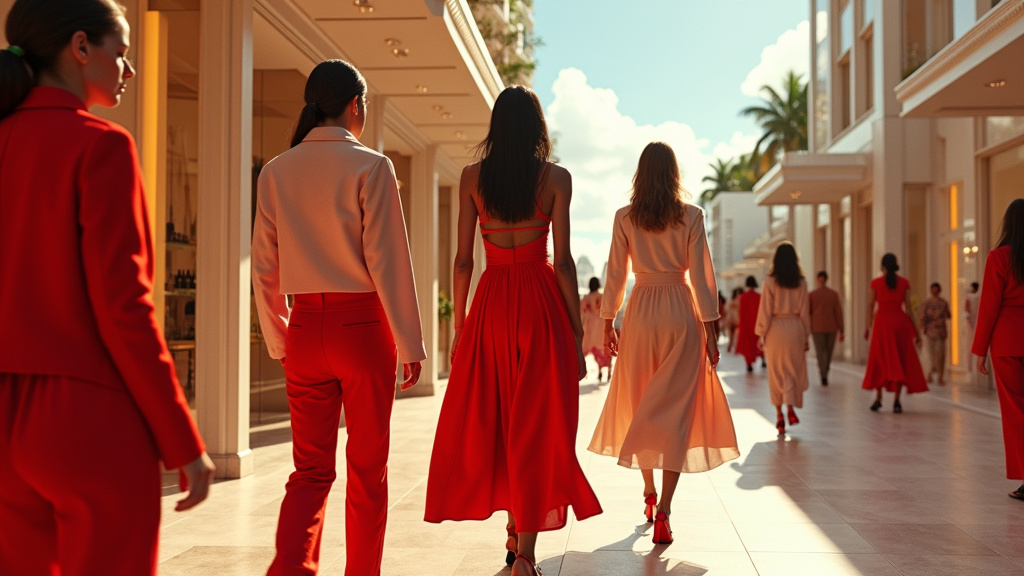Paris, France – From June 4th to June 9th, 2025, the global fashion spotlight converged on the French capital for Paris Men’s Fashion Week, showcasing the Spring/Summer 2026 collections. This season concluded with a resounding emphasis on two interconnected themes: sustainability and the evolving definition of menswear through fluidity.
Over the course of the six-day event, which presented the visions of over 50 design houses, it became unequivocally clear that the industry is navigating a significant transformation. Designers demonstrated a collective commitment not only to aesthetic innovation but also to environmental responsibility and shifting societal norms.
A Confluence of Style and Conscience
The imperative of sustainability emerged as a central pillar of the SS26 showcases. Across numerous presentations, design houses highlighted collections deeply rooted in eco-conscious practices. This commitment manifested in the widespread adoption of eco-friendly materials, signaling a move away from conventional, resource-intensive fabrics.
A notable trend was the sophisticated integration of innovative recycled textiles, demonstrating how post-consumer waste and industrial byproducts can be transformed into high-fashion garments. Alongside these recycled materials, biodegradable fabrics featured prominently, offering alternatives designed to minimize environmental impact at the end of a garment’s lifecycle. This focus underscores an industry-wide acknowledgment of fashion’s significant ecological footprint and a proactive effort to mitigate it.
The prevalence of sustainable sourcing and material innovation points to a growing industry focus on conscious consumption. Brands are not only designing with the planet in mind but are also seeking to educate consumers and encourage more thoughtful purchasing habits. This signals a potential long-term shift in the relationship between designers, retailers, and the end consumer, placing ethical and environmental considerations on par with traditional design aesthetics and trends.
Fluidity Redefines Menswear
Parallel to the sustainability drive, Paris Men’s Fashion Week SS26 witnessed a significant evolution in silhouette and form, challenging conventional notions of menswear. A prominent runway trend was the distinct shift towards fluid, deconstructed silhouettes in tailoring. Traditional rigid structures gave way to softer lines, relaxed fits, and draping fabrics that allowed for greater movement and a less restrictive feel.
Jackets were often less structured, trousers wider and more relaxed, and overall forms favored comfort and ease. This fluidity extended beyond cut and shape into the increasing presence of gender-neutral designs. Collections featured garments that blurred traditional lines between masculine and feminine aesthetics, offering pieces intended to be worn by anyone, regardless of gender identity.
This notable increase in gender-neutral designs reflects and contributes to the evolving definitions of menswear. It suggests a departure from prescribed norms and an embrace of personal expression and individuality. The runway became a platform for exploring identity through clothing, where garments served as expressions of self rather than strict adherence to outdated categories. This movement towards fluidity and gender-neutrality aligns with broader cultural conversations about identity and self-expression, positioning fashion as a mirror to contemporary society.
Beyond the Runway
The trends observed at Paris Men’s Fashion Week SS26 – the emphasis on sustainability and the embrace of fluidity – are more than just fleeting runway moments. They represent fundamental shifts within the global fashion industry.
The commitment to eco-friendly materials and conscious consumption indicates a necessary response to environmental challenges and growing consumer awareness. It suggests that sustainable practices are moving from niche concerns to core components of design and business strategy for major houses. The exploration of fluid and gender-neutral designs, meanwhile, reflects a cultural shift towards greater inclusivity and personal freedom in style.
These interwoven themes presented in Paris are poised to influence retail offerings, consumer choices, and the broader direction of fashion in the coming years. The Spring/Summer 2026 season, as presented from June 4th to June 9th, 2025, served as a powerful statement: the future of menswear is inherently linked to both environmental responsibility and the freedom of self-expression.





